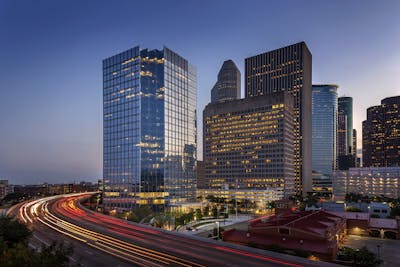
Tornillo-Guadalupe Land Port of Entry
Using modern design to meet safety standards and minimize conflict.
Project Facts
| Location | Tornillo, Texas |
| Owner | General Services Administration |
| Size | 117 acres |
| Cost | $71.5 million |
| Status | Completed 2019 |
Overview
Walter P Moore provided civil, traffic, and structural engineering design and construction phase services for the new Land Port of Entry. Using modern strategies and technology, like BIM/Revit modeling and AutoCad Civil 3D, the new build incorporated modern design plans to enhance safety and reduce any impacts on the actual construction.
Services
About the Project
The Land Port of Entry project is located in El Paso County at the Tornillo-Guadalupe bridge site. The 117-acre plan included the site work and embankment of approximately 320,000 cubic yards of earth as well as a new design for all of concrete pavement and roadways on the port site.
Lastly, updates to administrative buildings, kennels, water distribution for domestic and fire, Privately Owned Vehicles (POV) and Government Owned Vehicles (GOV) parking and impound lots, inspection lanes, and import and export cargo building loading docks were also planned.
Walter P Moore jumped in to help and designed the routing of underground utilities as well as the sanitary, storm, and domestic water systems. A new domestic booster pump station and storage tank was also part of the plan, which included a 50,000-gallon steel glass lined domestic water storage, a 220,000-gallon steel glass lined fire suppression storage tank, and 6,500 linear feet of 8-inch PVC C900 for both domestic and fire suppression system lines.
On-site, packaged sanitary treatment plant performance specifications were provided to and planned with the General Services Administration, Customs and Border Protection, and potential suppliers of the packaged unit. On-site storm water and retention planned for the 100-year storm event, whole treated sanitary effluent would now be retained on-site and reused as part of the landscaping drip irrigation.
Walter P Moore also provided designs for all traffic-related signage and striping, along with site circulation review and recommendations.



